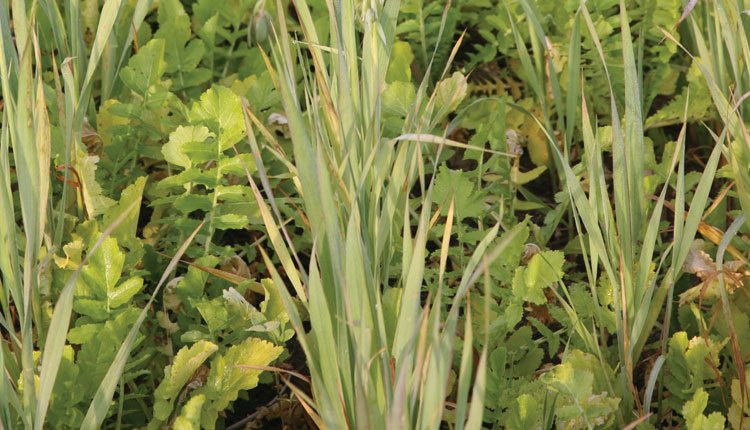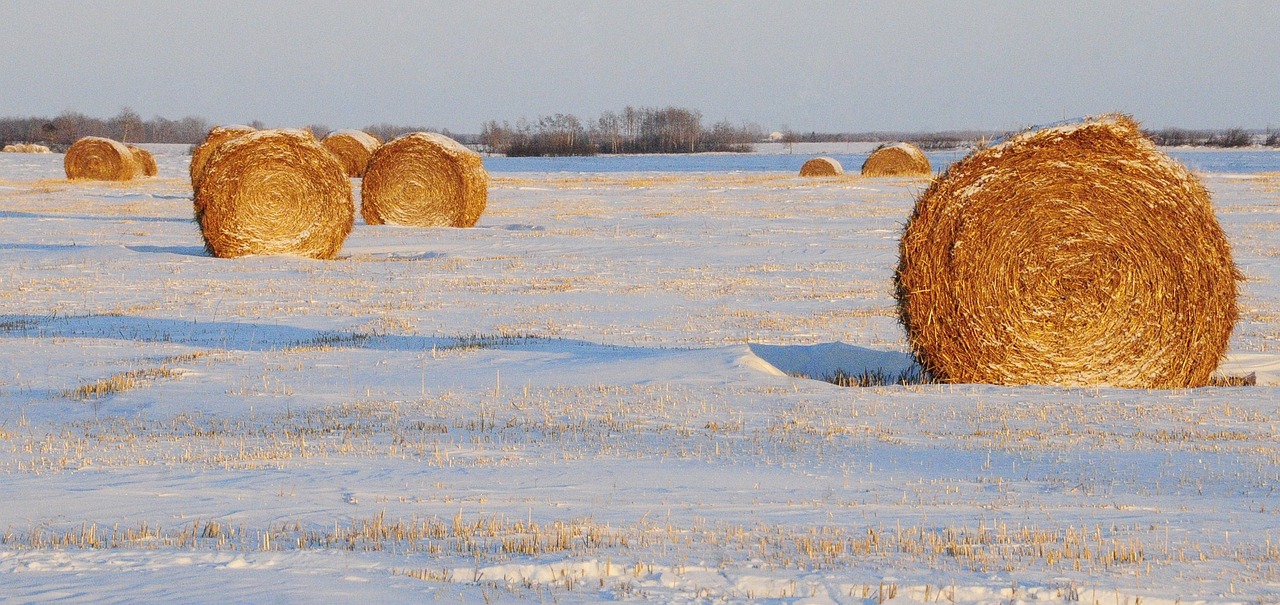The acreage planted steadily increases year over year.
It wasn’t so long ago that cover crops were considered a fad. Not ready to run ahead with a small crowd, most farmers took a wait-and-see approach. They watched neighbors plant radishes, grasses and oats after harvesting their cash crops with the hope of revitalizing soil, stopping erosion and loosening compacted soil. Maybe it would work, but better to let someone else dip into their thin margins to try it first.
Clearly, the fad has endured, says Steve Groff, founding partner of Cover Crop Solutions, in Lititz, Penn. He was one of the early adopters. After planting daikon radishes, Groff found the soil immediately different.
“I noticed the following year the soil was more mellow where the radishes had gone to winter kill,” Groff says. “The yields were also significantly higher where the radishes had been planted.”
What Groff couldn’t find was a steady supply of radish seeds, so he planted again the following season and harvested the seed. He thought he’d have enough for about four years, but neighbors started calling, and he soon sold all he had.
“Clearly we’re past the fad stage. We’re in the trend phase,” says Groff, who saw the business potential that led to founding Cover Crop Solutions.
According to the 2015 Cover Crop Survey conducted by the Conservation Technology Information Center (CTIC), the total acreage of cover crops planted by 1,200 responding farmers increased 20 percent from 2013 to 2014.
The survey also found that the average farmer who took part in the survey increased the acreage he or she planted, from 225 acres in 2013 to 259 in 2014. Those same farmers say they plan to plant on average 300 acres each this year.
— Steve Groff
Results Drive Decisions
During the past five years, Rob Myers, a University of Missouri agronomist and regional Extension director for the North Central
Sustainable Agriculture Research and Education (SARE) program, says total cover crop acreage among surveyed farmers has more than doubled, and he doesn’t expect it to slow anytime soon.
Results are driving the acreage increase. “The guys using cover crops notice that difference after a few years, and talking to their neighbors definitely has a ripple effect,” Myers says.
Cover crop users, both anecdotally and through surveys, report yield increases in crops following cover crops. The most recent CTIC/SARE survey reports a 2.1 percent increase in corn (3.7 bushels per acre) compared to fields that did not have cover crops, and soybean yields increased 4.2 percent (2.2 bushels per acre). Previous CTIC/SARE surveys also showed a yield increase, particularly in the drought year of 2012.
Jim Isermann, who farms 900 acres of corn, soybeans and wheat in Streator, Ill., believes yield is up in his cover-cropped fields, but he hasn’t done direct comparisons. Isermann says he can spot differences in the fields.
“Plant health is evident,” says Isermann, who also serves as cover crop specialist for the Illinois Council on Best Management Practices. “The crop seems healthier; it stays green a little longer and it extends the life cycle of the plant.”
Isermann started planting cover crops in 2008 as forage for his 80 beef cattle. Since then, he’s saved on feed costs, and he believes certain crops keep weed pressure down.
“We’re seeing that cereal rye helps to control weeds,” he says. “We’ve definitely been able to cut back on herbicides.”
Many Uses
Ask a cover crop specialist or seed salesperson why you should plant cover crops, and he or she will likely turn the question around and ask “What is it you’d like to improve about your soil?”
It’s not about getting just anything in the ground after harvest; it’s about managing your own needs, Groff says.
“Choosing your cover crop program is like choosing a spouse — you have to choose one that’s right for you,” he says.
According to the CTIC/SARE survey, 84 percent of respondents planted cereal grains and grasses in 2014, with cereal rye, annual ryegrass and oats leading the way. Many of those growers may have been looking to capture nitrogen that might have otherwise run off their fields. Those crops can also be useful in controlling erosion or weeds.
Others (about 61 percent) planted brassica, with radish, rapeseed and turnips leading the way. Radishes in particular, which can drill down as far as 14 inches into the ground, can loosen compacted soil.
Legumes, the next most common cover crop, were planted by 57 percent of farmers. Crimson clover is known to fix nitrogen, and it supports aphid predators, helping control insect pressure.
Farmers have a lot of options. They simply need to apply the right crop to their situation.
Jerry Hall, co-founder of Grassland Oregon, says the overall message he sends to farmers is that soil needs to be treated like any other tool on the farm. “Cover crops are like greasing the bearings and changing the oil in your tractor,” Hall says. “You can get by for a little while not doing that, but not for long. Some view it as an added expense, when in reality they should look at it as maintenance for their land.”
Seed companies that specialize in cover crops have an opportunity to build business with customers who need help determining how to best use cover crops and who specifically look to them for expertise.
According to the CTIC/SARE survey, 36 percent of respondents say they prefer purchasing seed from a company that specializes in cover crops, and 31 percent say that ag retailers are their choice. Clearly, they’re looking for expertise in the field and for a friendly local face they feel they can trust.
According to the survey, “That hints at exciting business opportunities for cover crop seed specialists and challenges for ag retailers and conventional seed channels in serving the growing cover crop market.”
Myers adds that companies that help with fertilizer and other services throughout the year could do well by extending similar services into the cover crop season. “It’s a good fit for retailers to start providing that service,” Myers says.
Still Challenges
While growth of cover crop acreage surges, users are still largely a minority. Unanswered questions remain about return on investment and how to properly manage different crops from year to year. “Even guys who use cover crops successfully are still learning what they can and can’t do,” Isermann says.
He hopes the results of a long-term research project conducted by the Soil Health Partnership will help to answer those questions. The organization uses dozens of demonstration farms across the Midwest to show side-by-side results of crops planted with and without cover crops. The Soil Health Partnership intends to publish its findings and develop best practices.
The University of Missouri’s Myers says more research will certainly help the cause. “There is a need for more research,” he says, adding that we know enough to make solid predictions about the benefits cover crops bring to a field. “As benefits become more widely known and more widely proven, it’s going to help us increase the adoption of cover crops.”
Patience is also key to cover crop success. Groff says if weather and other conditions are optimal in a growing season, he might not see much benefit from his cover crops. But over the long term, there is value.
Groff points specifically to organic matter in his soil, which was down to 2 percent 20 years ago. Today, he says it’s above 5 percent. “I can’t promise you will get a yield increase every single year that you plant a cover crop,” Groff explains. “But there are other issues that come into play. If anything can help with soil health, it’s cover crops.”
Tight margins can also be an issue. If it takes several years to see a return on the investment, that might be a difficult trigger to pull. “Guys were more interested in trying this when corn was $6 per bushel,” Isermann adds.
Still, cover crops have come a long way since farmers like Groff were toying with daikon radishes in the 1990s. Species are being developed for specific regions, and growers are starting to use mixes of multiple species to maximize benefits.
Hall says those who still haven’t seen the need to incorporate cover crops into their farming operation might be swayed as the technology, and proof, get better.
“We’ve barely scratched the surface,” Hall says.












